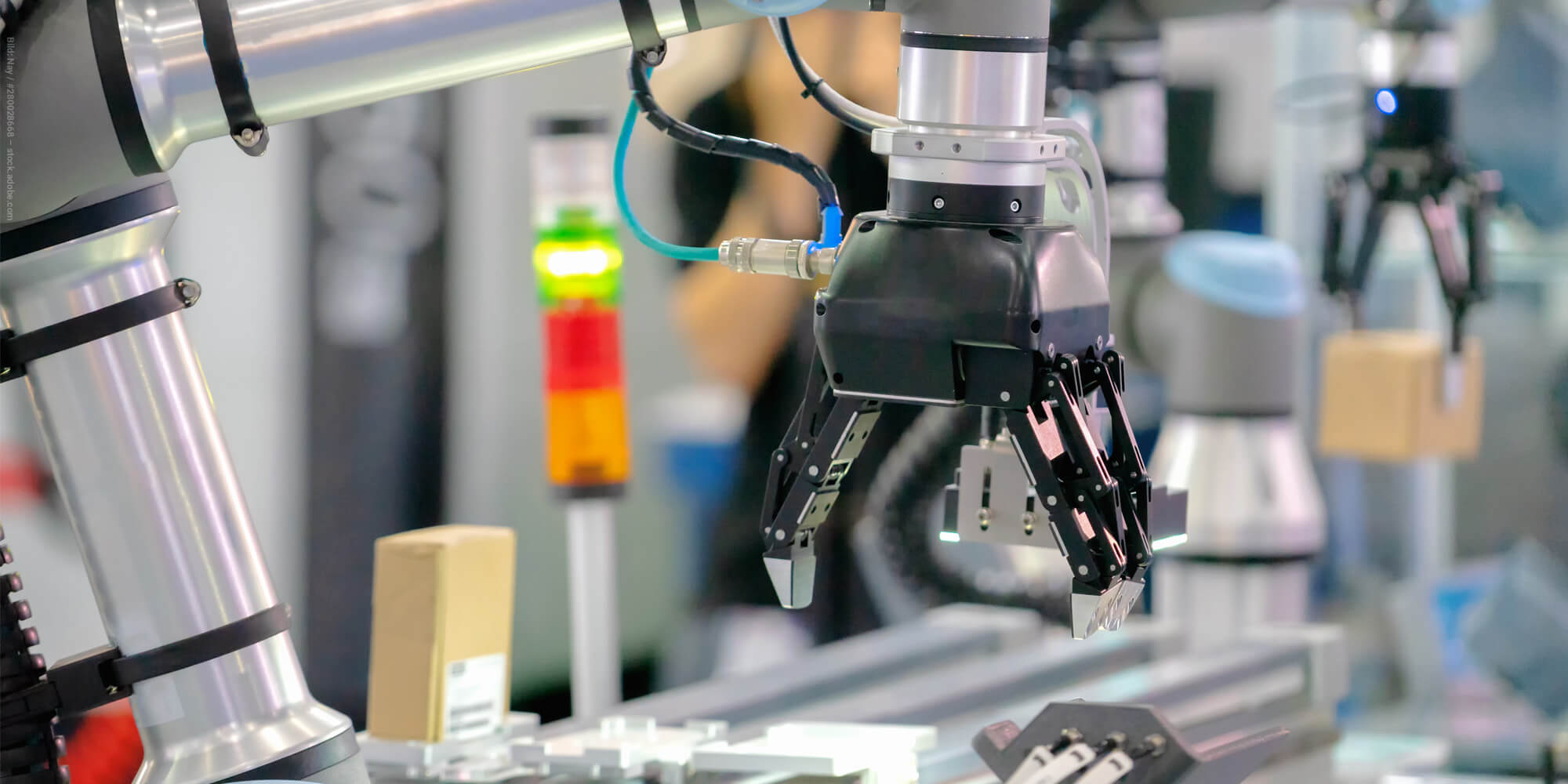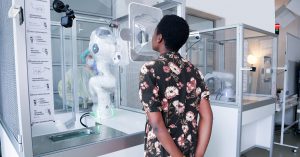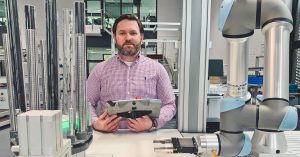Thanks to their simple programming and innovative camera systems, state-of-the-art cobots can help companies with even complex process automation tasks.
Due to their small footprint, lightweight cobots can be seamlessly and flexibly integrated into existing production environments. As a result, the topic of robotics has become an interesting prospect for companies – particularly SMEs – when it comes to optimising added value in production. In many areas of production, robots of this kind are already used for assembly, sorting, or separating chaotic stockpiles of bulk material. They can also be put to effective use by taking over processes that are ergonomically demanding or generally pose a health risk to human employees.
Indeed, when it comes to manual assembly, companies have a myriad of sophisticated cobot applications at their disposal for tasks such as screwing and welding. The wide range of ways in which cobots can be used is due in no small part to the large selection of available end effectors (EOAT = end-of-arm tooling). As the last link in a cobot’s arm – one that can be swapped out very quickly – these tools are specially designed to automate specific tasks.
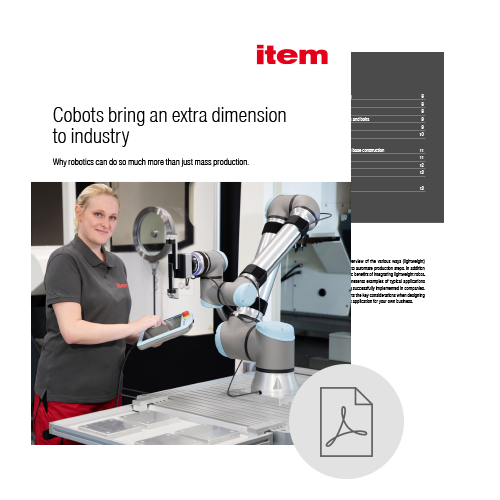
An overview of robot applications
Read our white paper to discover even more applications and advantages of robotics in industry – and explore why robots are a worthwhile investment for small and medium-sized enterprises, too.
Get the white paper now
How lightweight robots make assembly more efficient
In practice, this means that cobots with the right tools can perform a wide variety of assembly tasks and safely handle a whole host of different materials. In addition to the large selection of possible end effectors, cobots offer the fundamental advantages of robotics, too. Much like conventional industrial robots, they also work with a very high level of precision, while delivering a repeatability that virtually no human employee could hope to match, especially when it comes to monotonous processes. Despite their compact design, certain cobot models are able to safely move components weighing over 15 kg.
Robots make production assembly operations more efficient, especially when heavy or bulky components have to be precisely placed, which is an exceptionally demanding task for employees.
When you consider all these advantages, robots make production assembly operations more efficient, especially when heavy or bulky components have to be precisely placed, which is an exceptionally demanding task for employees. Connecting components is another typical application for cobots, for instance when insulation with a roller attachment is being fitted into a component. To ensure these and other assembly applications for robots can be rolled out quickly as pilot projects in assembly, motion profiles are relatively easy to implement. This is down to graphical user guidance and customisable configuration templates.

Robots for sorting chaotic stockpiles of goods
Sometimes, all employees have to do is move the robot arm into the relevant positions themselves and enter the waypoints, thus training the cobot to carry out the relevant task, as if they were showing a colleague what to do. However, this is not an option when it comes to sorting and separating chaotic stockpiles of goods. For applications like these, a robot control unit has to be integrated using artificial intelligence (AI). This involves equipping the cobot with a 3D camera suitable for use in an industrial environment. The AI evaluates the images from the camera in real time and translates them into control commands for the cobot. Third-party suppliers such as robominds offer turnkey solutions that are compatible with cobots from numerous manufacturers.
Additional force torque sensors integrated into the gripping tools give the cobots the tactile response necessary for sorting highly sensitive components.
This enables robots to sort goods without the need for fixed waypoints, accurately grab overlapping objects at pre-defined points and then deposit them in a way that best suits the rest of the production line. Additional force torque sensors integrated into the gripping tools give the cobots the tactile response necessary for sorting highly sensitive components. This monotonous step can often be delegated entirely to robots, ensuring that employees in production can devote their time to other tasks that will create added value.
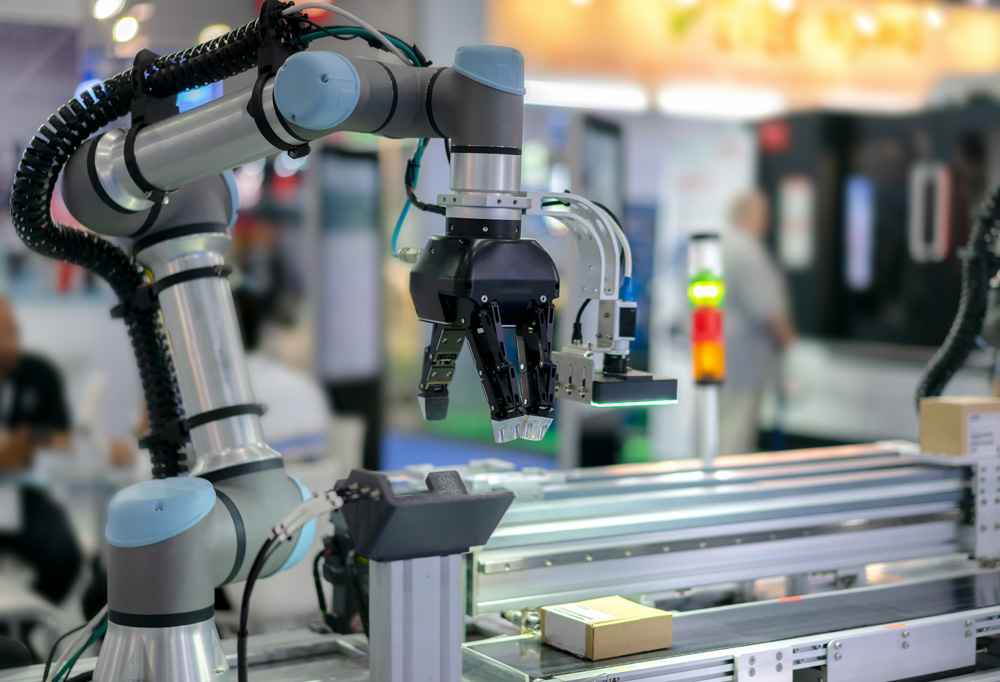
Want all the latest updates on innovative robotics applications? Simply subscribe to the item blog by completing the box at the top right.

